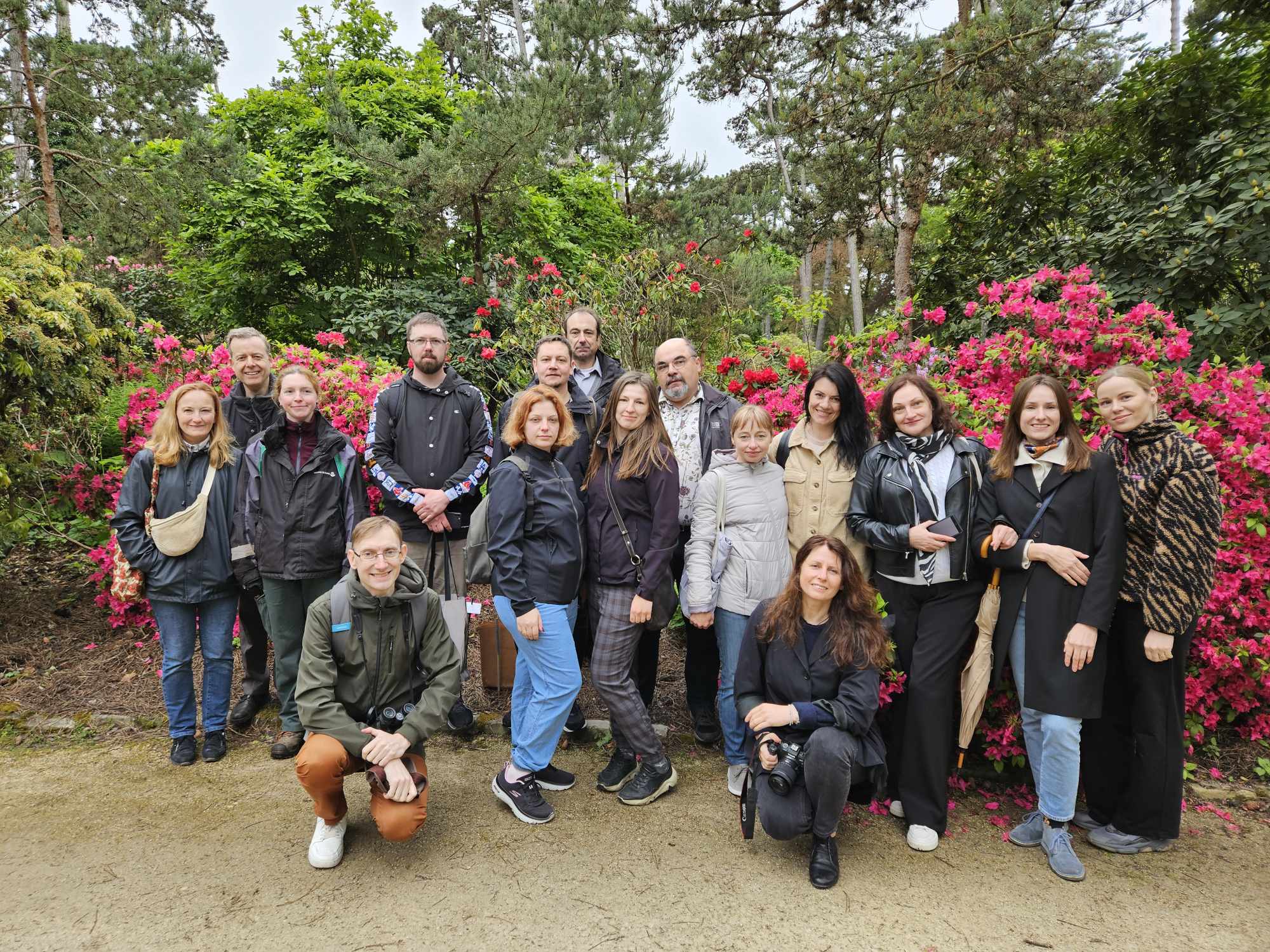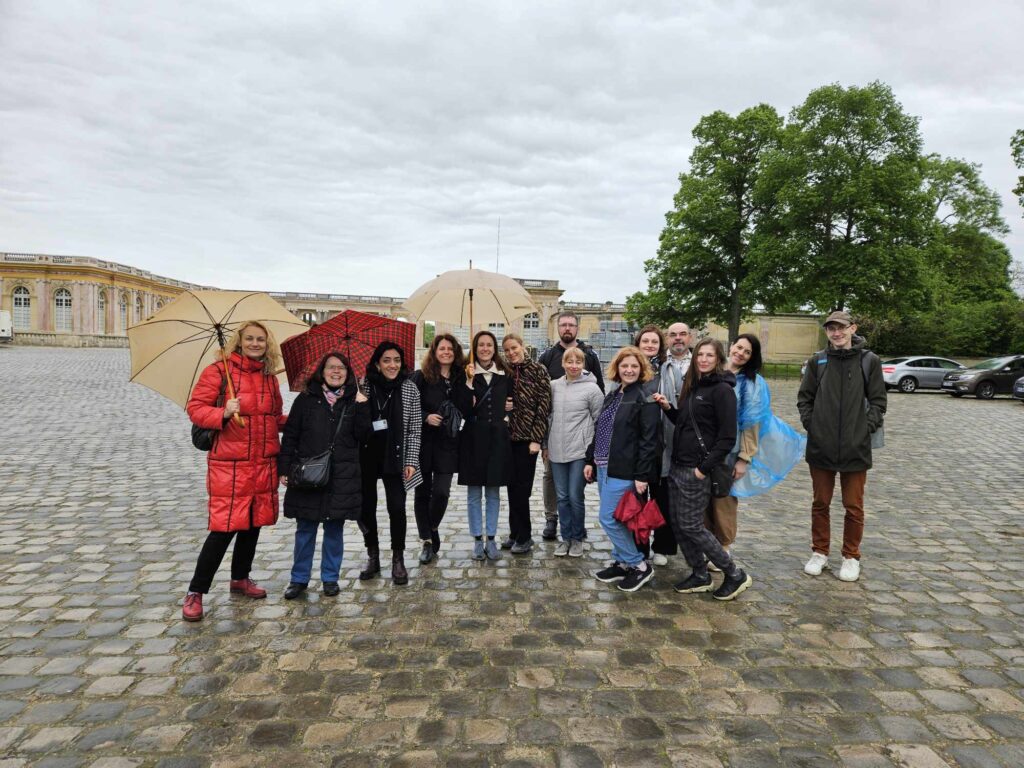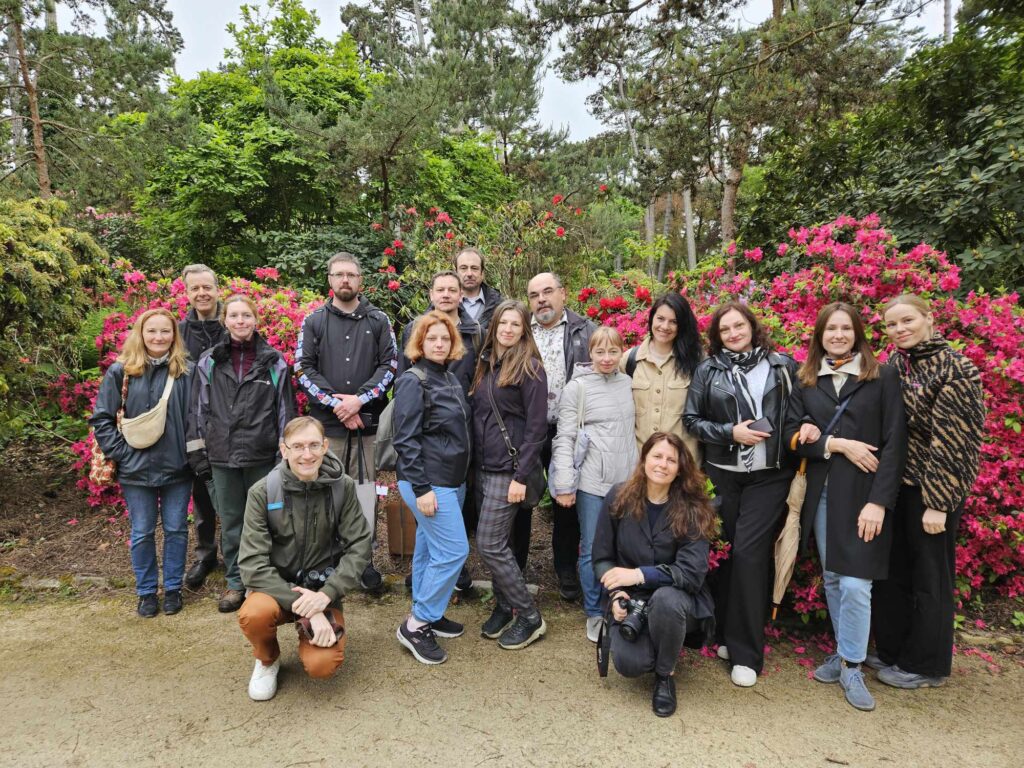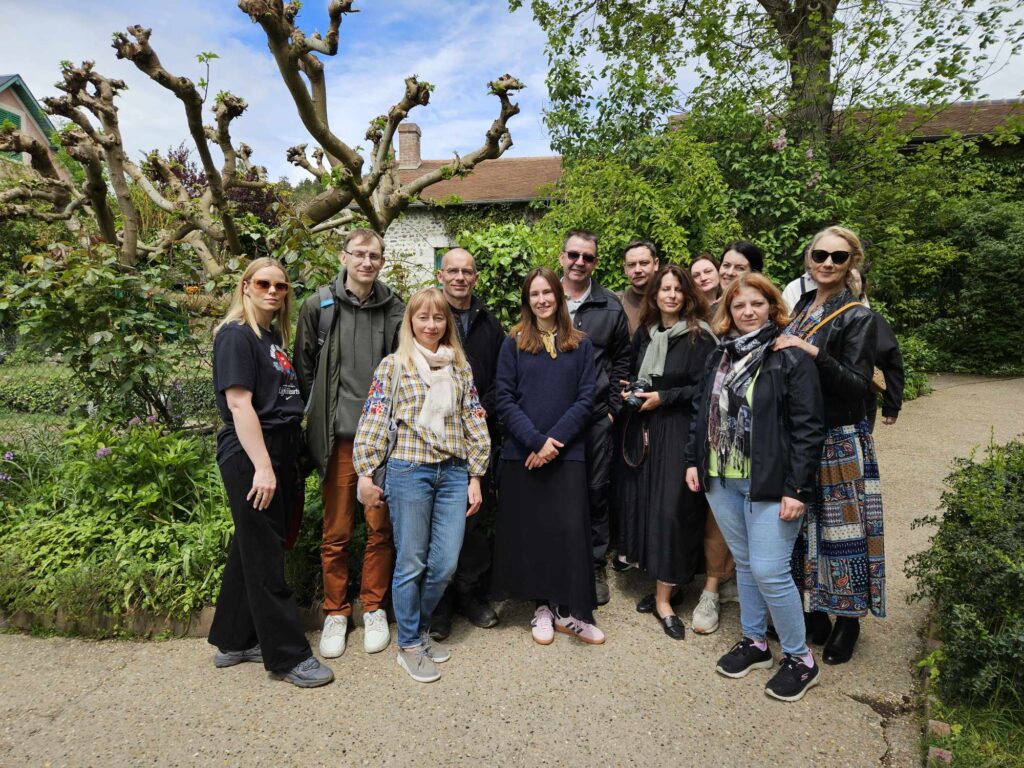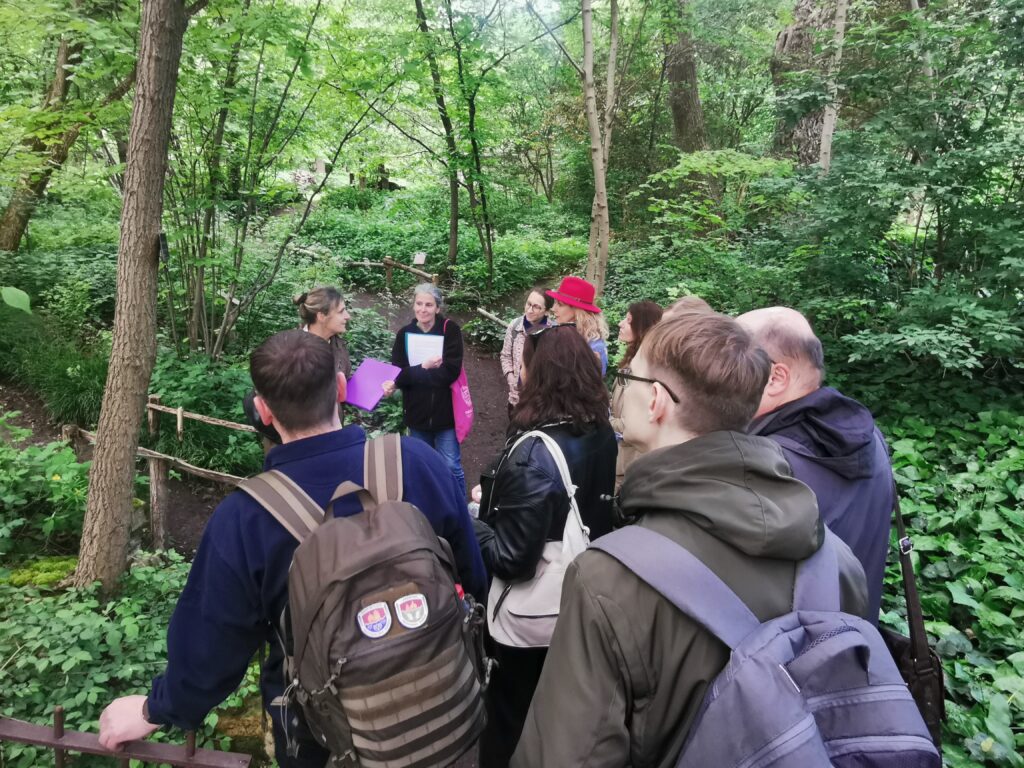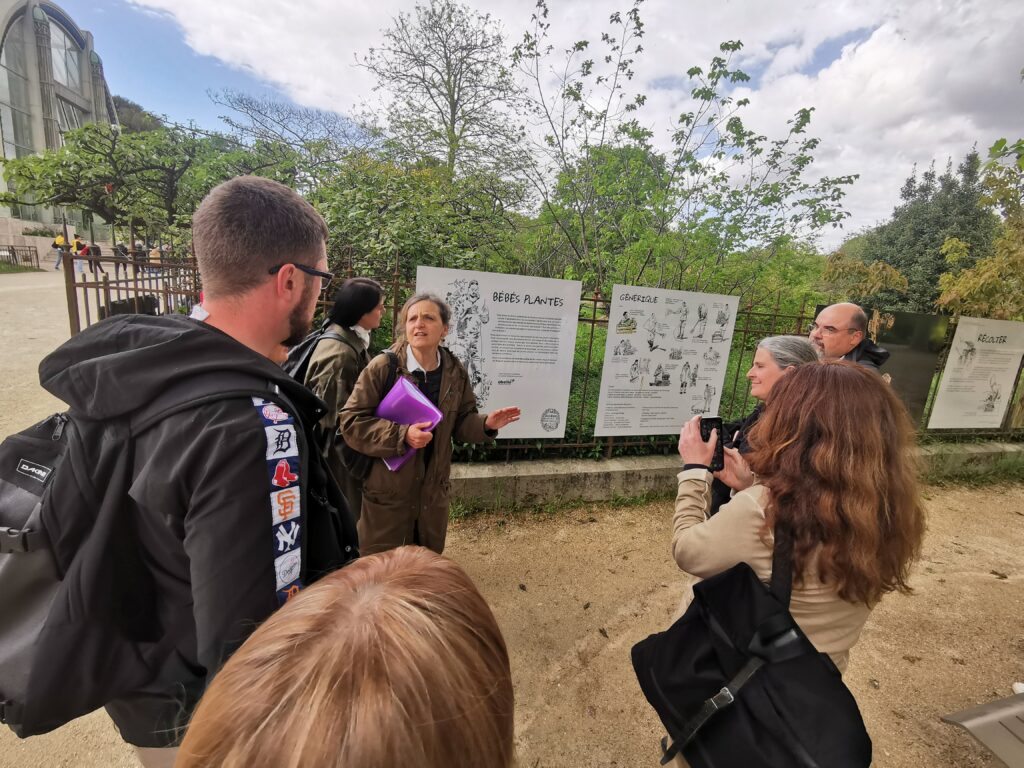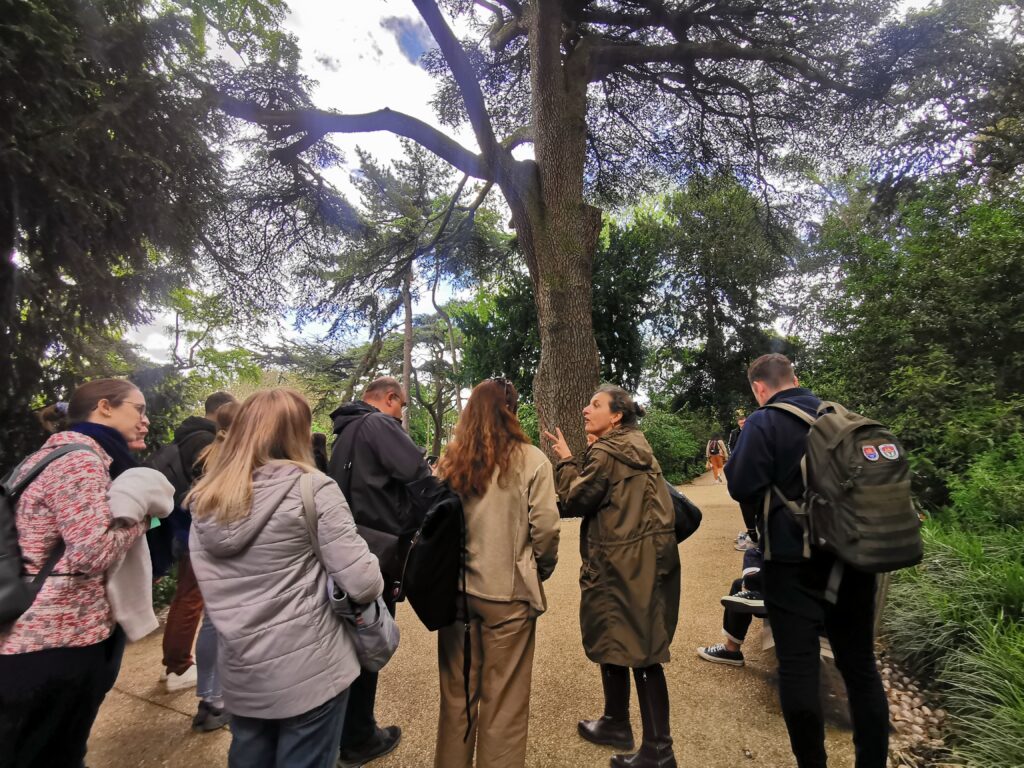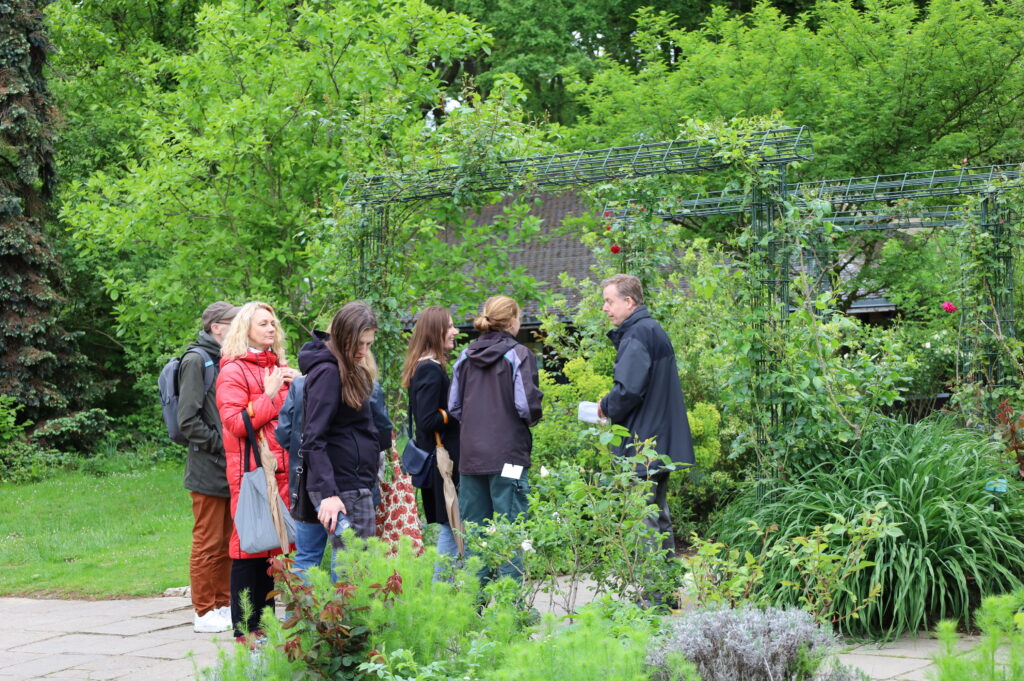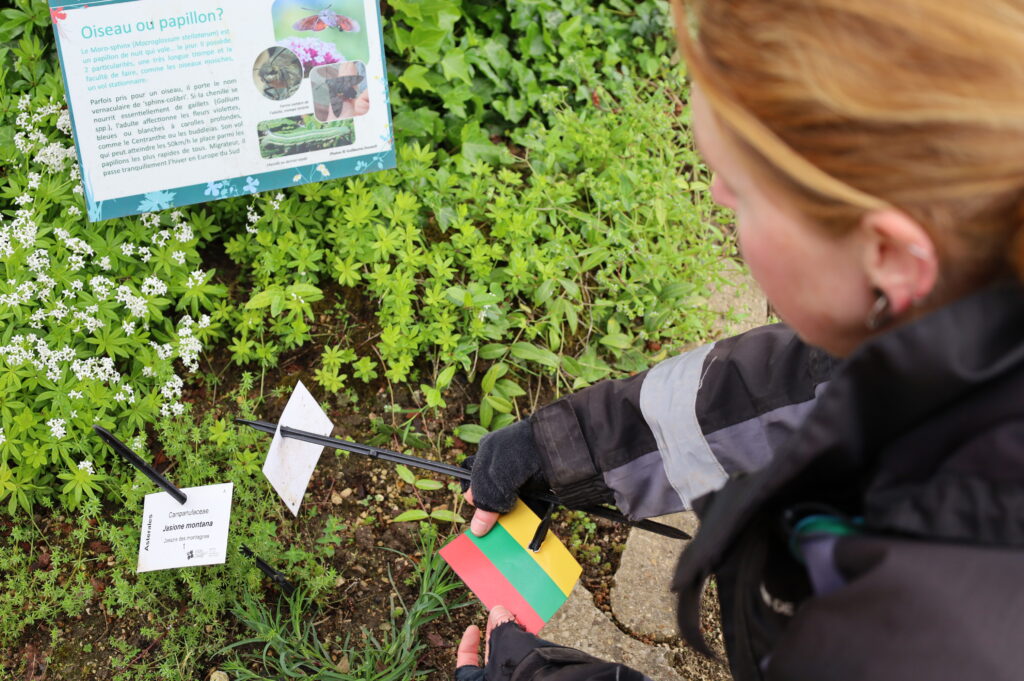It is not a secret that almost every institution supplements its direct activities with various projects designed to expand opportunities and enable them to do more. Ideas for such projects are born often, but in order to materialize them, you need to gather a lot of resources, experience, and assemble a capable team. The latter task plays an important role in the “Green Stories” project as well. Various development activities for the partners’ employees are planned, which are expected to be useful not only during the project, but also in the long-term perspective, when the institutions carry out activities in the fields of environmental education and biodiversity preservation.
The first of such activities, the international training programm of project partners staff, already took place on May 1-7 in Paris. Representatives of the project partners visited the best botanical gardens examples in the city: the Floral de Paris and Bagatelle parks, the botanical garden and conservatory of the National Museum of Natural History, the gardens of Versailles and Marie Antoinette’s village, the Montmartre vineyard, Clichy-Batignolles – Martin Luther King Park, Claude Monet’s Giverny garden.
During the training meetings there were presentations about the various educational and scientific activities carried out in the visited objects, aimed at improving the knowledge of society, especially schoolchildren, about the importance of biodiversity, gained various experiences that will be useful in creating educational content in our project.
The gardens of Versailles are especially rich in education for children of all ages, even from 6 months age, as well as for sensitive social groups. Activities include sensory experiences, experiments, games, musical activities, which are designed to increase awareness of the importance of gardens, plants, nature in our environment. We also took part in drawing and scent educations, when the observation of nature is combined with creative activities. During those workshops the aim is to introduce the features of plants and at the same time to provoke visitors’ senses through colors and smells, to develop sensory abilities.
Presentations of scientific research carried out in the gardens were also very valuable. For example, natural forest conditions is created in the botanical garden of the National Museum of Natural History in the middle of Paris, where you can observe how wild plants adapt to urban conditions. Even the natural forest soil has been restored by transporting it from the natural environment. There were also presented a research which is used in student programs to show how the same species has evolved in different parts of the Earth, to reveal adaptations and changes of plants of the same species.
The Parc Floral de Paris, which is a part of the Botanical Garden of Paris, is constantly conducting various scientific studies on plant adaptation, evolution, etc. During our visit several of them were also presented. Inside the park, there is also a library that collects data about biodiversity in the city. ~10,000 books for adults and ~3,000 for children are stored here. Experience about publishing on the topic of biodiversity were also shared, which is also relevant for our project, during which it is planned to publish 4 publications about rare and historical plants. The library also organizes various educational activities, e.g. courses for caretakers of green spaces, education for children, how to recognize birds, plants, establish a garden or an anthill in the city. Parc Floral de Paris is not only an amazing park with its diversity. This is an excellent example of an organization that is able to combine, actively and successfully support a complex of different activities aimed at the common goal of improving biodiversity.
During the training program the project partners participants also had the opportunity to communicate and establish professional relationships with representatives of the fields of botany, biodiversity, gardeners, city park guides. Vincent Lipa, the head of the Paris Botanical Garden seed bank, shared his experiences and presentations on relevant topics, as well as the representative of the Paris City Hall who organized the meeting, head of the city’s Green Spaces and Environment Directorate, Vincent Lysiak, Denis Duclos, director of European, international and foreign relations of the National Museum of Natural History, and the head of the department of cultural activities Fabienne Stosic, the director of the Botanical Garden Isabelle Glais and chief gardener Noëlle Parisi, head of Versailles projects Astrid Brandt-Grau and head of cultural events Coralie Berlivet, etc.
A general conclusion can be drawn about all the visited objects – they all stand on three supporting pillars: scientific, cultural and educational activities for society. The goals of all institutions are aimed at increasing public awareness of the importance of biodiversity, promoting interest in nature, strengthening the human relationship with it, and at the same time conducting important scientific research, learning and expert activities. Our project “Green Stories” is being developed on a very similar basis. Experiences and lessons learned about the balance and harmony between urban and wild plants are also very important, how naturalistic, biodiversity-friendly greenery can flourish in urbanized areas and provide several benefits: environmental, educational and social.
We hope to effectively use the gained knowledge in setting up historical and rare plant expositions in the project area in Lithuania and Latvia, apply it in preparing educational packages, communicating with target groups. As always, new contacts and sharing of experiences inspire new ideas. This time is no exception – we already have future plans for new projects that will contribute to the continuity and development of the ongoing activities, thus ensuring the sustainability.


